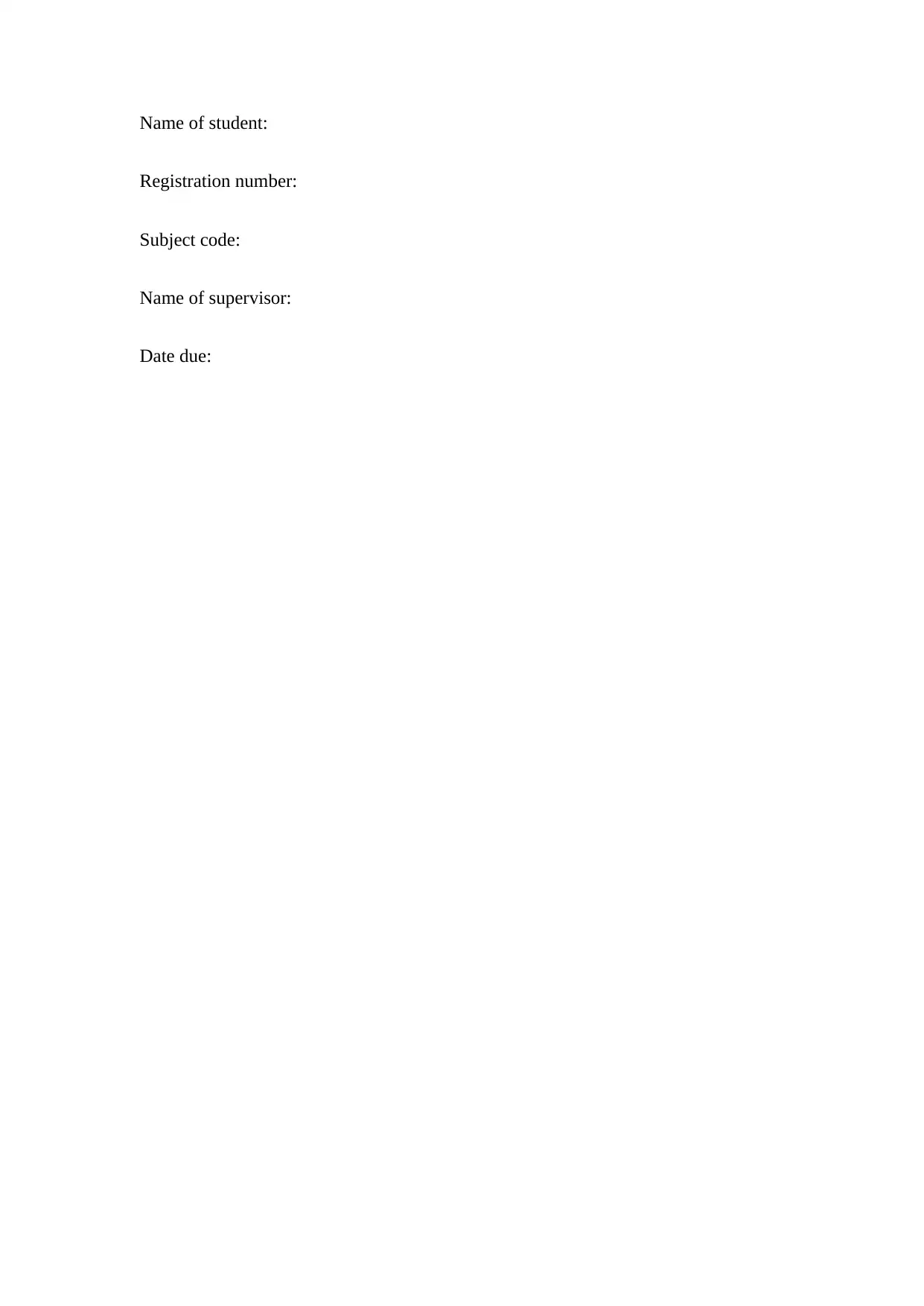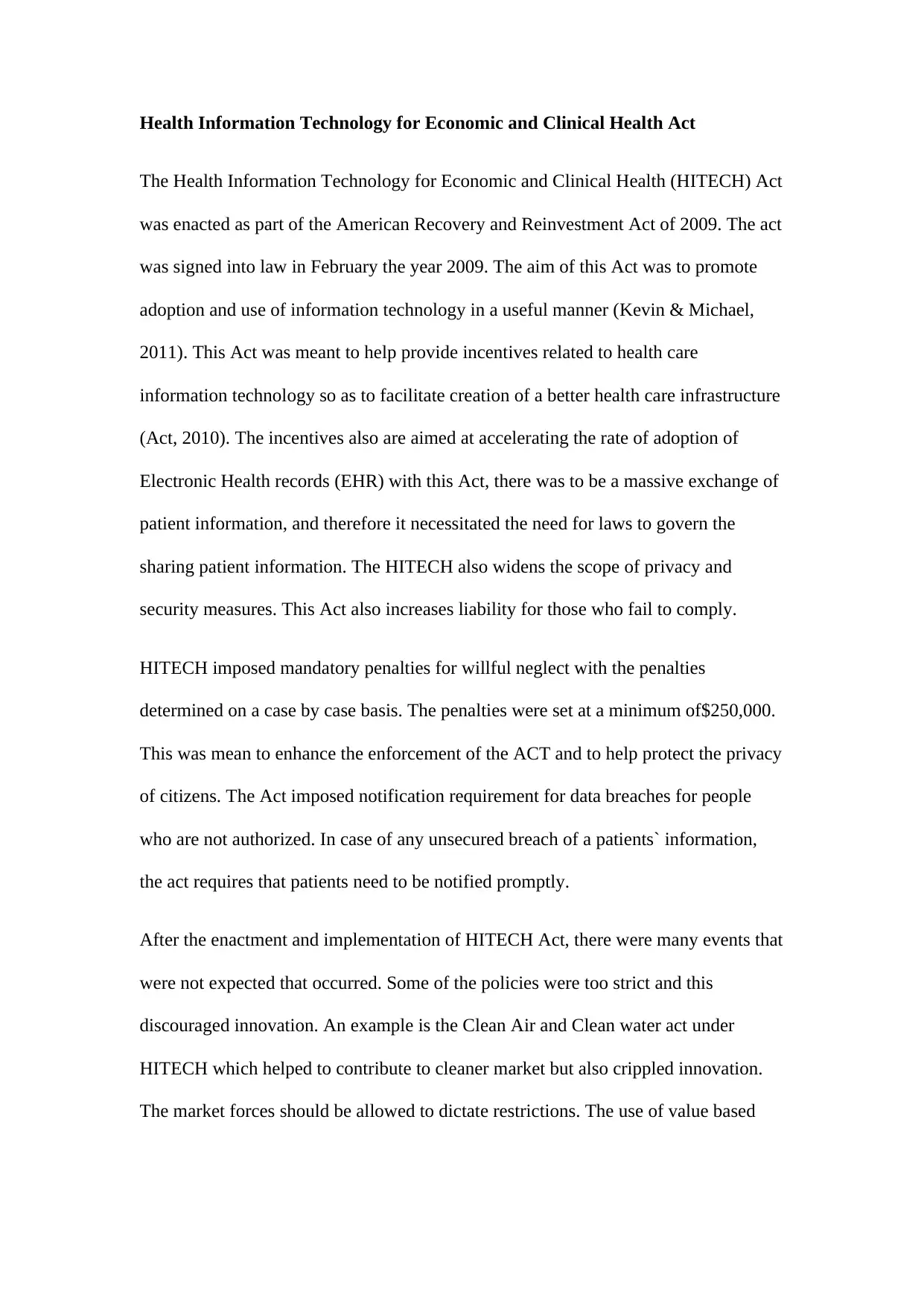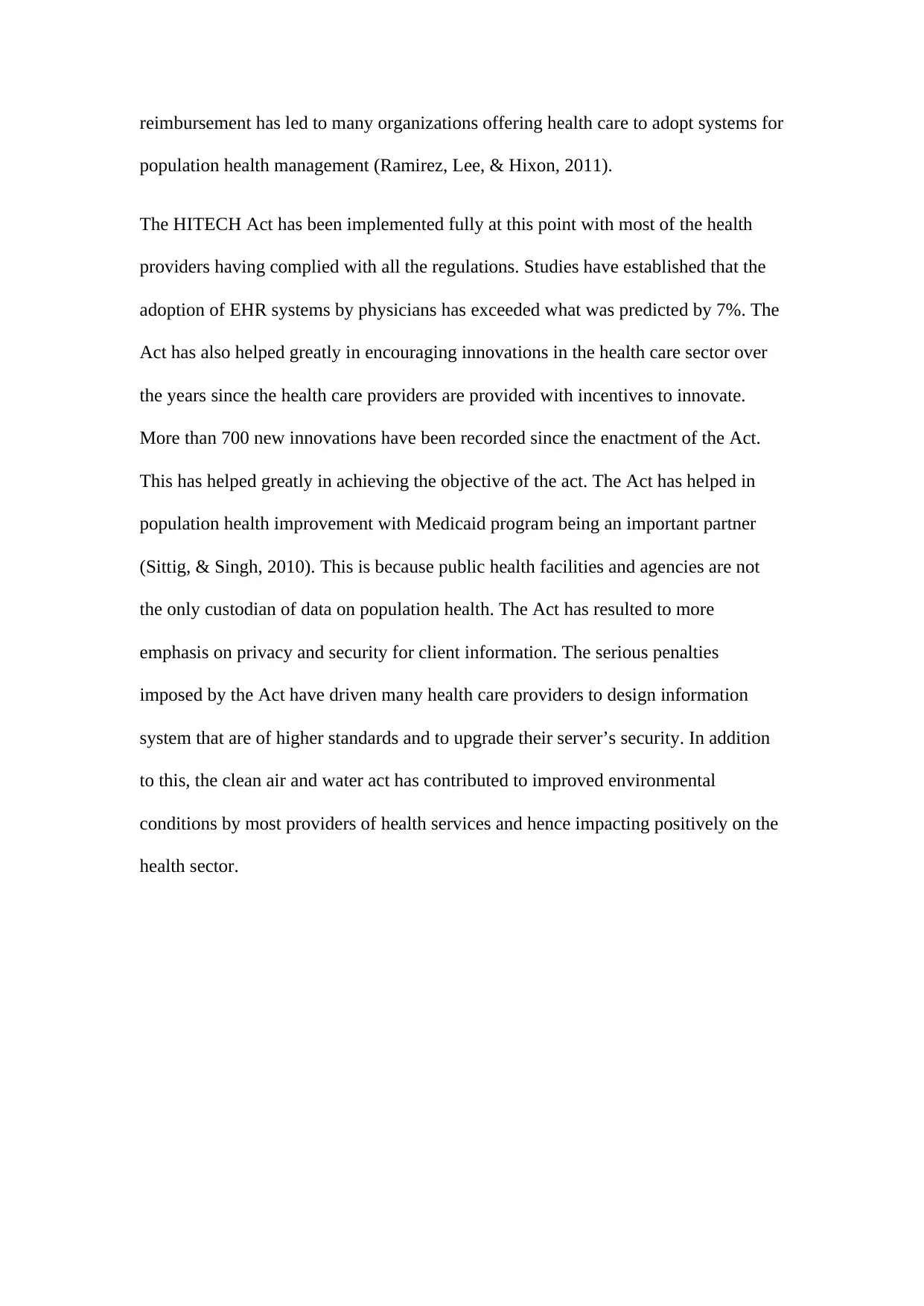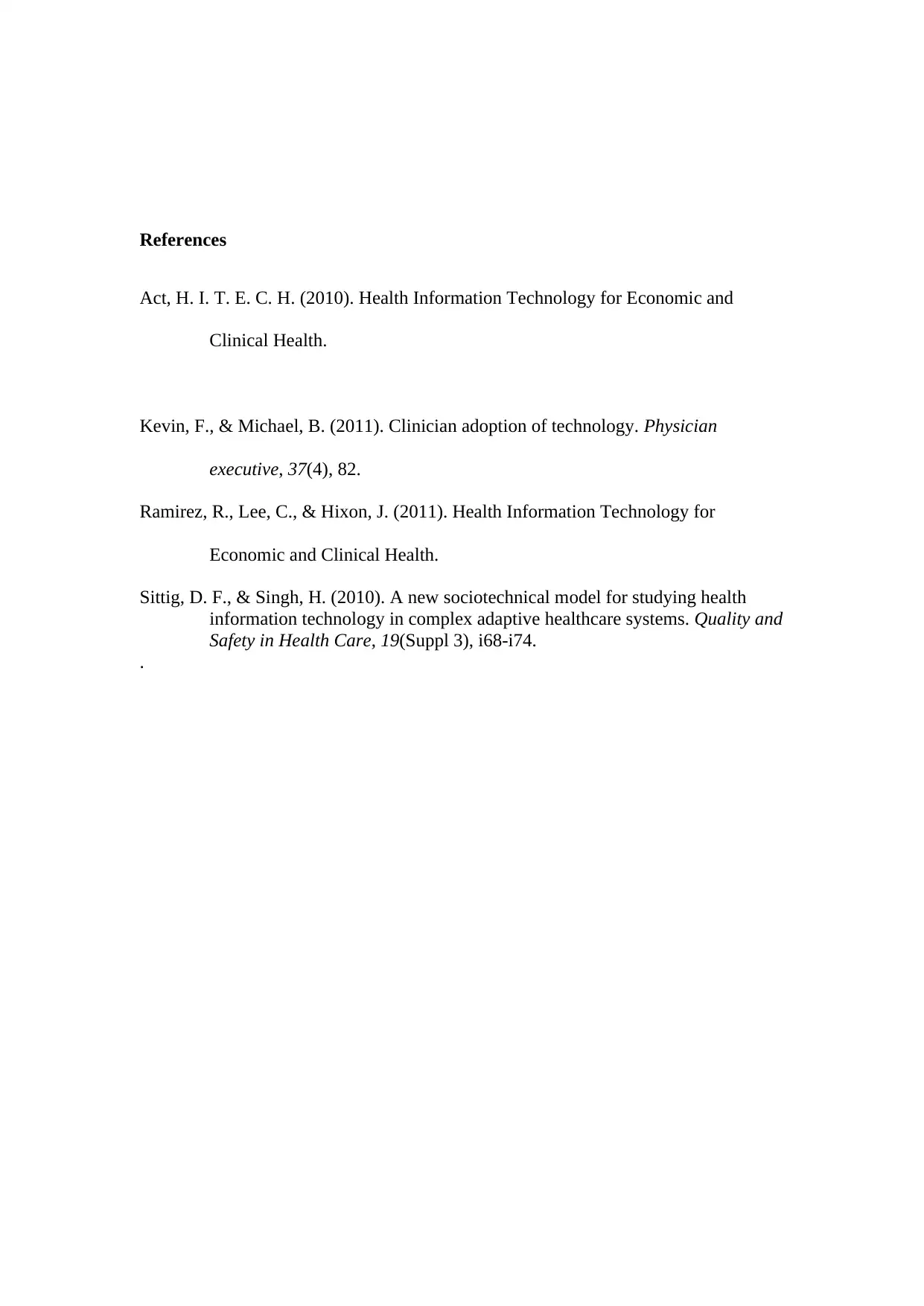HITECH Act Report
VerifiedAdded on 2019/10/31
|4
|718
|324
Report
AI Summary
This report analyzes the Health Information Technology for Economic and Clinical Health (HITECH) Act, enacted in 2009. It details the Act's goals of promoting health IT adoption, incentivizing EHR use, and strengthening patient data privacy and security. The report discusses the Act's impact, including increased EHR adoption exceeding initial predictions, the stimulation of healthcare innovation (over 700 new innovations recorded), and improved population health management. However, it also notes unintended consequences such as overly strict policies that hindered innovation in some areas. The report concludes that while the HITECH Act has largely achieved its objectives, there are areas where adjustments could be made to further optimize its effectiveness.
1 out of 4











![[object Object]](/_next/static/media/star-bottom.7253800d.svg)